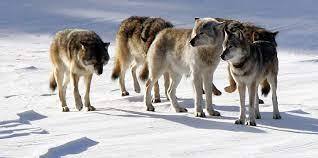ISLE ROYALE
In 2018 the last remaining wolves on Isle Royale received an infusion of new blood and new DNA courtesy of a U.S. National Park Service airlift. Perhaps the oldest wolf/moose study in North America, since 1958, the new wave of wolves was being recruited to bolster the last remaining population which consisted of a 9-year old male and his 7-year old daughter, also his half-sibling. Two wolves would come from Michigan’s Upper Peninsula (where Algonquin Park moose were re-introduced in the 1980s), four from Minnesota and others possibly from Ontario scheduled for 2019. Except for the Ontario wolves, the re-enforcements had limited experience killing moose. However, they would find an abundance of beaver, a favoured prey, in addition to 1876 moose – the result of a reduced wolf population. The initial recruitment, scheduled to be completed by October 31, 2018, abruptly came to a conclusion on October 12 due to cold weather, extensive rain and snow showers (Park Newsletter). Having successfully translocated 4 wolves from Minnesota more wolves, perhaps 20-30, were to be added in the next three to five years, according to Liz Valencia, Chief of Interpretation and Cultural Resources at Isle Royale National Park. However, she said, COVID-19 momentarily put on hold plans to relocate those wolves to the park.
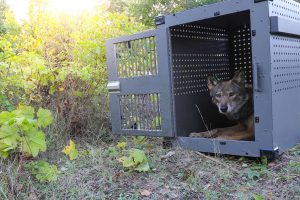
According to the MNRF “the safest and easiest time to capture and relocate the wolves is in winter conditions, ideally in January or February.”
The wolves were fitted with tracking collars and screened for diseases.
At one time there were as many as 50 wolves (1980) on the island. Originally wolves accessed the island of Isle Royale by way of natural ice bridges during the late 1940s. The newcomers were not released in the resident pair’s territory. “We intend to let the wolves work it out, “said Park Superintendent Phyliss Green.
At one time they may have decimated the caribou populations on Lake Superior but at Michigan’s Lake Superior island chain, known as Isle Royale National Park, relocated Grey wolves (Canadian spelling) are beginning to reign in an overabundance of moose. Rolf Peterson, Wildlife Ecologist at Michigan Technological University, has been studying the relationship of wolves and moose on the Lake Superior island chain since 1971 and he states that “they’re having no trouble finding and preying on moose, and that’s really significant.”
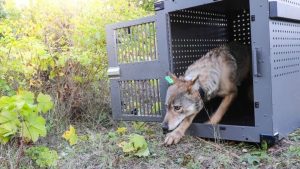
Initial observations indicate that wolves relocated as a pack from Ontario’s Michipicoten Islands Provincial Park have been more successful adapting to life than have individual wolves in reference to the death of four relocated animals. Peterson suggested that “a bonded group was more likely crucial” to their survival. MNRF Population Ecologist Brent Patterson of Trent University added that the large size of the Michipicoten wolves could be an important factor suggesting that their size gave them a leg up getting through the deep snow to hunt moose.
Superintendent Green said that the Canadian wolves have a lower probability of coyote genes. “This is based upon genetic work done during previous captures of this population of wolves.” The Ministry of Natural Resources and Forestry added that “although hybridization with dogs continues to be fairly common among eastern coyotes, there is little evidence of dog genes in wolf populations anywhere in the Great Lakes Region. The wolves that colonized Michipicoten Island most likely came from Pukaskwa National Park in Ontario which has among the most pure grey wolves (aka gray or timber wolves) in Ontario.”
In a news release the Ministry of Natural Resources and Forestry said, “In the coming months Ontario will be working with our partners in the US National Park Service to assist their efforts to introduce additional wolves to Isle Royale National Park in Michigan. The ministry is planning to relocate several wolves from Michipicoten Island Provincial Park to Isle Royale National Park. Several of the wolves are radio-collared, making capture easier. This will be a great research opportunity for the ministry to study relationships between species of wildlife and their natural environment.”
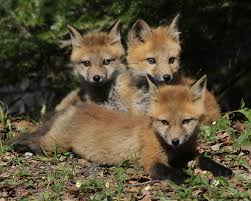
Rare Wolf Attack
For the very first time scientists have documented an adult wolf killing red fox kits in their den. Code-name 016M, the adult male wolf apparently dined on at least two of the three kits denning in the hollow trunk of a northern white cedar as reported in the “Northeastern Naturalist” journal.
016M had been captured in March 2019 near Wawa, Ontario and moved to the island by the National Park Service. Ear tags and a GPS collar helped identify the wolf and the attack site.
Historically red foxes have lived on the Lake Superior Island since 1925. According to wildlife biologist Mark Romanski, co-author of the study, wolves and red foxes don’t compete for prey and while wolves are ‘apex predators’ on Isle Royale they usually don’t kill foxes, especially when food is abundant. Wolves favour beaver and moose which, according to the study, were at or near the highest ever recorded. Red foxes diet on small mammals, fruit and birds although they will scavenge wolf kills.
016M “spent six days at the den site and invested a non-trivial amount of energy excavating the den and killing the kits,” said the report. Scientists speculate that perhaps this single wolf was ‘packless’ and due to its limited knowledge of local food resources combined with the risk of injury if it attacked an adult moose its usual instincts were altered. This is referred to as “pseudo-food limitation effects.”
American martens, European pine martens and crows naturally feed on fox kits but were ruled out as the possible predator. This study’s goal is to “understand the ecosystem services that the transplants and their offspring bring to the island.”
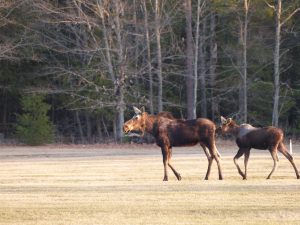
A winter moose census, mainly aerial, indicated that the additional wolves have halted the moose population’s annual growth of 19% since 2012 during which they damaged their habitat, particularly balsam fir, their preferential wintertime food. The winter study revealed that the newly transplanted wolves were averaging one moose kill every other day. The 2023 report states that the moose population drop of 28% from 2022 is one of the biggest one-year collapses ever seen at the park.
The annual report estimates that there are 31 wolves, an increase from 28. The moose total was roughly 967, a 54% decline from 2000 animals in 2019. Researchers are hoping that this is helping to rebalance an ecosystem that has been knocked “off-kilter”.
“It’s been hugely successful,” said Sarah Hoy, research assistant, professor, animal ecologist and co-study leader at Michigan Tech. “Of the original 19 wolves only a few are believed to be alive, hardly surprising,” said Hoy, “as wild wolves seldom live longer than five years. But their descendants are believed to have produced at least seven litters.”
An 11-member pack is on the main island’s eastern side, a five-member pack on the western side. Also there are three groups of at least three wolves each, a few loners and pairs plus a new pack that appears to be forming.
“This year’s population is the highest since 2006 when it totaled 30,” said Hoy.
Moose numbers increased during the wolves’ decline but have since “plunged.” Predation accounted for nearly 90% of moose deaths over the past year. Blood sucking tick infestations and malnutrition due to a shortage of balsam fir, the moose’s primary winter food source, also contributed to dwindling moose numbers.
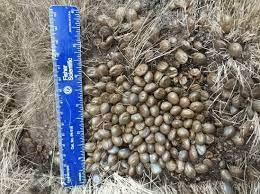
Researchers are watching the Isle’s vegetation. If it doesn’t recover significantly “it means we won’t be able to have as many moose and in the long term that would be trouble for the wolves,” said Vucetich, a Michigan University biologist.
Wilderness Watch (WW) isn’t pleased. “We have felt and still believe that the National Park Service should not have intervened and set up this artificial population of wolves.” Some say they should have been allowed to die out as have other species once on the island such as the Canada Lynx and woodland caribou. “Species come and species go,” said WW. “The federal Wilderness Act directs us to let nature call the shots and not impose our human desires.”
Park officials and Michigan Tech scientists contend that the absence of top of the food chain predators of moose and beaver would have been ruinous for the island’s forests. Even now its balsam firs continue to deteriorate from over browsing and an attack of the tree-killing spruce budworm.
Conclusion
Hoy acknowledged that eventually wolf inbreeding could return meaning that park managers would need to import new DNA every decade or so. But presently the park’s ecosystem is improving. “The old hands-off approach to managing national parks, figuring everything will turn out OK is probably not sufficient,” added Peterson. “Our footprint is all over the entire globe.”
